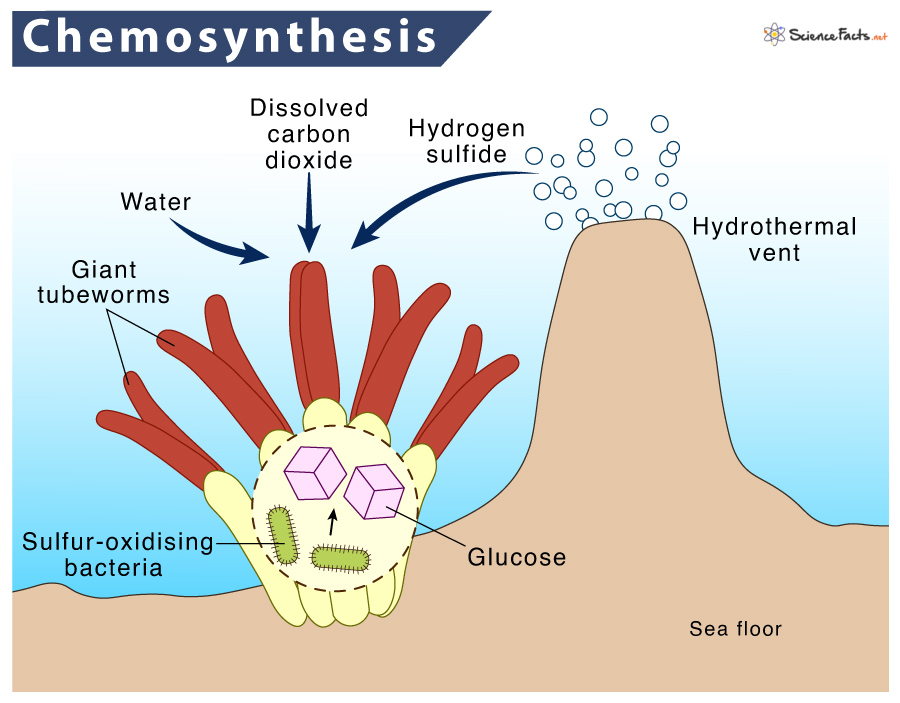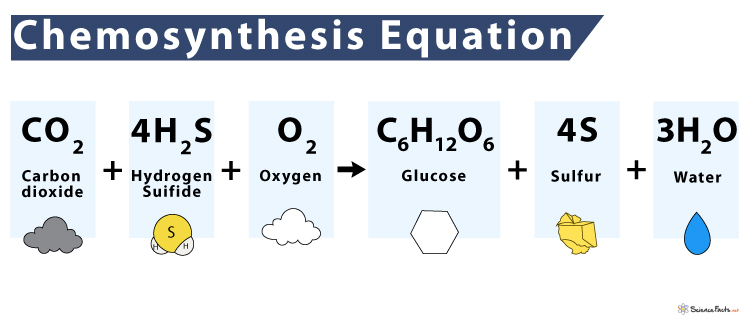What is Chemosynthesis
Why is Chemosynthesis Important
How does Chemosynthesis Work
Chemosynthesis vs Photosynthesis
Such microbes called chemoautotrophs can survive extremely harsh conditions like high temperature and osmotic pressures. Sulfur-oxidizing gamma proteobacteria, neutrophilic iron-oxidizing bacteria, epsilon proteobacteria, and methanogenicarchaea are typical chemoautotrophs. Besides hydrothermal vents, chemosynthesis also happens in hot springs and cold seeps. When was it Discovered Chemosynthesis was discovered in 1977 when a group of scientists on an ocean research expedition near the Galápagos Islands found hot hydrothermal vents emitting a hot chemical fluid on the ocean floor. They found a community of several new animal species living in absolute darkness without sunlight. We will now discuss the process of chemosynthesis using hydrogen sulfide (H2S) as the energy source. Certain eukaryotes build a symbiotic relationship with chemoautotrophs to get food. For example, tubeworms have these chemoautotrophic bacteria in their trophosome, sheltering them. The bacteria, in turn, convert the chemicals from the hydrothermal vents into food for the worm.
Equation
Chemical Equation Word Equation Carbon dioxide + Hydrogen sulfide + Oxygen → Glucose + Sulfur + Water Reactants
Carbon dioxide (CO2)Hydrogen sulfide (H2S)Oxygen (O2)
Substances Produced
Glucose (C6H12O6)Sulfur (S)Water (H2O)


